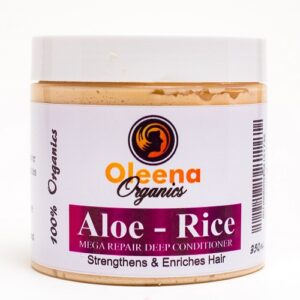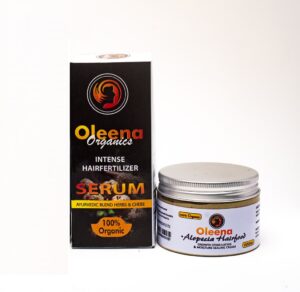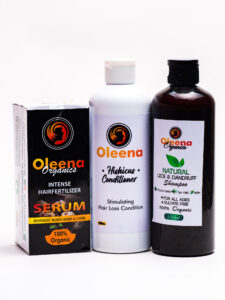How To Combat Dry Hair, Frizzy, or Unmanageable Hair:5 Sign and Achievable Solution
How To Combat Dry Hair, Frizzy, or Unmanageable Hair: 5 Signs and Solution

If you’re struggling with dry hair,frizzy, or unmanageable hair, you’re not alone. Having dry hair, frizzy, or unmanageable hair can be frustrating and make us feel self-conscious. But fear not, there are ways to combat these hair issues and restore the healthy, shiny locks you desire. Many people struggle with these common hair issues, and it can be frustrating trying to figure out how to fix it. But don’t worry, there are solutions! In this blog post, we’ll discuss five signs that your hair might be in need of some TLC, and offer some solutions to help you combat these common hair woes.
There are several signs that you may have dry hair, including hair that is dull, brittle, or frizzy. Dry hair can also be more prone to breakage and split ends
Your hair is dry and brittle
One of the most common signs of dry hair, damaged hair is that it feels dry and brittle to the touch. When you have dry your hair won’t feel healthy, but a healthy should feel soft and smooth, but dry hair can feel rough and straw-like. If you’re experiencing this, it’s a good indication that your hair is in need of some moisture.
This issue is a common issue, especially in the colder months when the air is dry and our hair is exposed to indoor heating.
To combat dry hair, there are several steps you can take. First, it’s important to use a nourishing shampoo and conditioner that is specifically designed for dry hair. Avoid using hot water when washing your hair, as this can strip the hair of its natural oils.
Here are a few tips for combating dry hair:
- Use a moisturizing shampoo and conditioner. Look for products that are formulated for dry hair and contain ingredients like hyaluronic acid, argan oil, and avocado oil.
- Avoid using hot water when washing your hair, as this can strip your hair of its natural oils. Instead, use lukewarm water and rinse your hair with cool water to help seal in moisture.
- Limit your use of heat-styling tools, such as hair dryers, straighteners, and curling irons. If you must use these tools, make sure to use a heat-protectant product and keep the heat setting at a moderate level to avoid damaging your hair.
- Avoid using harsh chemicals on your hair, such as hair dyes and bleaching agents. These can damage your hair and make it more prone to dryness.
- Deep condition your hair regularly. You can use a store-bought deep conditioning treatment or make your own by mixing equal parts of coconut oil and honey and applying it to your hair. Leave it on for 30 minutes before rinsing it out with cool water.
- Avoid tying your hair back too tightly, as this can cause breakage and dryness. If you must tie your hair back, use a soft, silk or satin scrunchie to avoid damaging your hair.
- Drink plenty of water and eat a healthy diet that includes foods rich in vitamins and minerals, such as fruits, vegetables, and fatty fish. This will help keep your hair moisturized and healthy from the inside out.
- Avoid exposing your hair to harsh environmental conditions, such as strong winds, extreme temperatures, and chlorine. If you must be in these conditions, protect your hair by wearing a hat or using a leave-in conditioner.
Your hair is frizzy and lacks shine
Frizz can be caused by a number of factors, including dryness, damage, and a lack of moisture. It is another common problem, and it’s often a sign that your hair is lacking moisture. Frizz occurs when the outer layer of your hair (the cuticle) becomes raised and unruly, resulting in a “frizzy” texture. This can happen for a number of reasons, including exposure to hot water, heat styling, or environmental factors like humidity.
Solution
- Use a sulfate-free shampoo and conditioner to avoid stripping natural oils from the hair.
- Avoid using hot water when washing hair, as it can cause frizz. Use lukewarm or cool water instead.
- Use a leave-in conditioner or hair oil to add moisture and tame frizz.
- Avoid using heat styling tools, such as hair dryers, straighteners, and curling irons, as they can cause hair to become frizzy. If you must use heat, apply a heat protectant product beforehand.
- Use a wide-tooth comb or brush to detangle hair, starting at the ends and working your way up to avoid causing frizz.
- Avoid tight hairstyles, such as ponytails or braids, as they can cause hair to become frizzy.
- Use a silk or satin pillowcase to reduce friction and prevent frizz while you sleep.
- Avoid using hair products with alcohol, as it can dry out the hair and cause frizz.
- Use a hair mask or deep conditioning treatment at least once a week to nourish and moisturize the hair.
- Consider getting regular trims to prevent split ends and maintain healthy hair.
- use a smoothing serum or oil and avoid brushing your hair when it’s dry, as this can cause frizz. Instead, use a wide-tooth comb to detangle your hair while it’s still damp.
Your hair is unmanageable and difficult to style
If your hair is difficult to brush, style, or manage, it’s a sign that it may be damaged or in need of some extra care. Healthy hair should be easy to style and manage, so if you’re struggling to control your hair, it’s time to take action.
Unmanageable hair can be caused by a variety of factors, including dry hair, damage, lack of moisture, and a buildup of styling products.
To restore manageability to your dry hair, try using a weekly clarifying treatment to remove product buildup and follow up with a deep conditioning treatment. Avoid using too many styling products and be sure to use a heat protectant when using heat styling tools.
Your hair is breaking or shedding excessively
Excessive shedding or breakage is another common sign that your hair may be in need of some extra attention. While it’s normal to lose a certain amount of hair each day, excessive shedding or breakage can be a sign of dry hair, damaged or unhealthy hair.
Solution to excessive breakage and shedding
- Use a mild shampoo and conditioner that is suitable for your hair type. Avoid harsh sulfate-based products that can strip the hair of natural oils.
- Avoid using hot water when washing your hair, as it can cause the hair to become dry and brittle. Use lukewarm water instead.
- Avoid using heat styling tools, such as blow dryers, straighteners, and curling irons, on a daily basis. If you must use them, make sure to use a heat protectant spray and set the temperature to the lowest setting possible.
- Avoid tight hairstyles, such as ponytails and braids, that can pull and damage the hair.
- Avoid using chemical treatments, such as dyes and relaxers, that can weaken the hair and cause breakage.
- Eat a healthy and balanced diet that includes plenty of protein, vitamins, and minerals to support healthy hair growth.
- Use a deep conditioning treatment once or twice a week to restore moisture and strength to the hair.
- Avoid brushing wet hair, as it is more prone to breakage. Use a wide-tooth comb to gently detangle the hair starting from the ends and working your way up to the roots.
- Avoid using hair accessories, such as rubber bands and clips, that can cause breakage.
- Consult with a hair specialist if you are experiencing excessive hair breakage and shedding to determine the cause and the best course of treatment.
Heat damage
Dry hair can be caused by heat damage. There are a few things you can try to help restore your hair if it has been damaged by heat. Some possible solutions include:
- Using a deep conditioning treatment: This can help to replenish moisture and repair damaged hair. Look for a treatment that is specifically designed for heat-damaged hair, and follow the instructions on the packaging.
- Avoiding heat styling tools: Try to limit your use of heat styling tools, such as hair dryers, curling irons, and flat irons. If you do need to use these tools, make sure to use a heat protectant spray first, and keep the heat setting on low.
- Trimming your hair: Damaged hair can sometimes become brittle and break easily. Trimming off the damaged ends can help to prevent further damage and promote healthy hair growth.
- Using a leave-in conditioner: A leave-in conditioner can help to add moisture and protect your hair from heat damage. Look for a product that contains natural oils, such as coconut oil or argan oil, which can help to nourish and repair damaged hair.
- Avoiding harsh chemicals: Chemicals in hair products, such as hair dyes and perms, can also damage your hair. If you use these products, be sure to follow the instructions carefully and use a deep conditioning treatment afterwards to help restore moisture to your hair.
In addition to these steps, it’s also important to eat a healthy diet and drink plenty of water to help keep your hair hydrated and healthy from the inside out.
SHOP OUR PRODUCTS



Follow us on Instagram for more hair tips here

